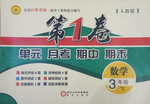题目内容
Taking away a city’s rubbish is a big job. Every day trucks come into a city to collect it. Most rubbish is made up of things we can’t eat or use. If we kept these things we would soon have a mountain of rubbish.
In some cities the rubbish is collected and taken outside of the city to a dump(垃圾站). Often the city dump is placed where the ground is low or there is a big hole. The kitchen rubbish is broken into small pieces and sent into the sewage system. The sewage system takes away the used water from toilets, bathtubs(澡盆) and other places.
To keep mice and flies away, some earth is used to cover the newly dumped rubbish. Later, grass may be planted on the rubbish-filled land. Finally, a house or a school may be built there, and then you’d never know that this had once been an old rubbish dump.
In other cities the rubbish is burnt in special places. The fire burns everything but the metal. Sometimes the metal can be used again in factories where things are made of metal. The food parts of rubbish are put in special piles where they slowly change into something called humus(腐殖土), which looks like black earth. It is rich with kinds of things that feed plants and help make them grow.
【小题1】You can most probably read the passage in _______.
| A.a history book | B.a TV guide |
| C.a science book | D.a telephone book |
| A.排污 | B.染色 | C.洗涤 | D.吸尘 |
| A.By burning it off. | B.By putting it in water. |
| C.By throwing it away. | D.By reusing and recycling it. |
【小题1】C
【小题2】A
【小题3】D
解析试题分析:这篇短文主要谈到了城市垃圾的处理问题,详细介绍了城市垃圾的一些常见处理方法。
【小题1】本文主要谈到了如何处理城市垃圾的问题,故有可能出自一本科学类书籍,故选C。
【小题2】联系下文takes away the used water from toilets, bathtubs(澡盆) and other places.可知此处指的是排污系统,故选A。
【小题3】根据Sometimes the metal can be used again in factories where things are made of metal.描述,可知金属可以进行回收利用,故选D。
考点:关于城市垃圾处理的说明文阅读
点评:本文浅显易懂,各个小题都能在文中找到适当依据。只要认真阅读短文,注意前后联系,就能顺利完成阅读。文章所设试题主要考察细节查找,做题关键是找出原文的根据,认真核查小题和原文的异同。

 第1卷单元月考期中期末系列答案
第1卷单元月考期中期末系列答案In 1986, Honda made a robot called ASIMO. And now, it has been developed greatly. Standing at 130cm and weighing 54kg. ASIMO is very much like a small astronaut wearing a bag on the back. And he can walk, flight, climb and run fast. Isn’t it wonderful?
The world’s first robot teacher is Saya. With her human-like face, she can show expressions like happiness, surprise, sadness, dislike, fear and she can even smile or show anger at students, which look much like a real teacher’s. To do this, her rubber skin is pulled from the back with motors inside. And her eyes and mouth have wires(电线) too. She can also say some simple words like “hello” or “thank you”.
In the UK, the development of robots is exciting. The mini-robots will send food, clean floors, collect and throw away waste. These robots can open doors by themselves and stop if anything or anyone is in the way.
These mini-robots are very useful for controlling infection(传染). Usually clean and dirty work is done by the same person, but here, you’ll have robots that do”dirty work”, like collecting dirty sheets, or taking away hospital waste; and you’ll have robots that do”clean work”, like bringing meals or clean sheets to patients. The robots have separate work so there’s no way for infection, which is great. But of course, robots would not take the piece of humans, but would free up more time for nurses to be with patients.
But if this is what it’s like in 2011, what’s it going to be like to 2021?
【小题1】In the following, which is ASIMO’s behavior?
| A.Smiling at people, saying “hello”. |
| B.Sending food or opening doors by himself |
| C.Fighting, climbing or running fast |
| D.Collecting waste for patients |
| A.Her face and rich expressions | B.Her clothes and shoes |
| C.Her walking and running speed | D.Her rich knowledge |
| A.Robots have come a long way since 1986. |
| B.The first robot teacher was made by Honda. |
| C.Saya looks like a small astronaut. |
| D.If anyone or anything is in the way, mini-robots will stop. |
| A.nurses would have more free time with patients |
| B.robots would not take the place of humans |
| C.dirty and clean work is always done by the same person |
| D.mini-robots are useful for controlling infection |
 ep
that night.
ep
that night. old rubbish dump.
old rubbish dump.